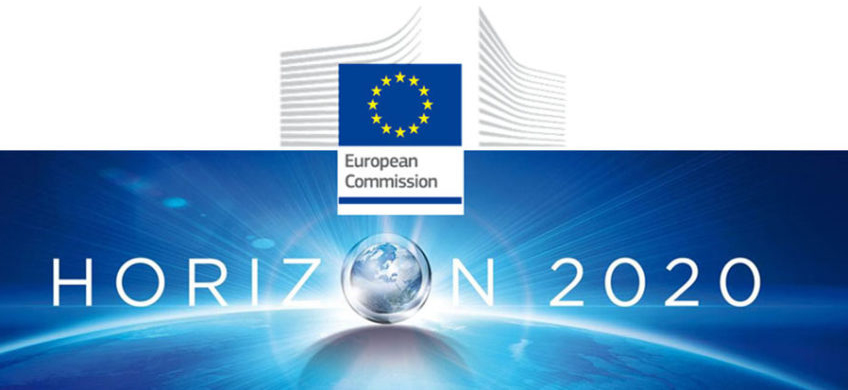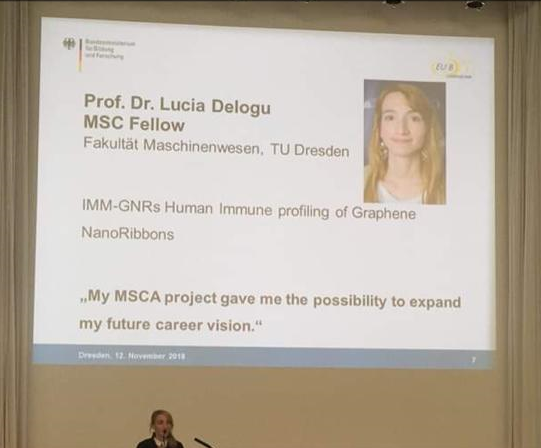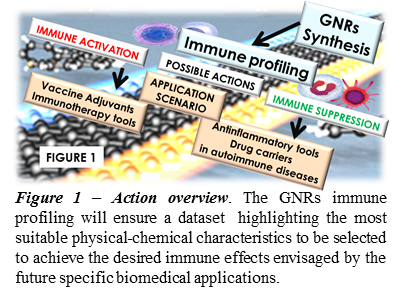IMM-GNRs
Human IMMune profiling of Graphene NanoRibbons (IMM-GNRs)
Marie Skłodowska-Curie Individual Fellowships (MSCA-IF) at Technische Universität Dresden (TUD), Germany


To promote the Safe and Healthy use of ‘Future and Emerging Technologies’ such as innovative carbon-based nanomaterials, the study of their interactions with blood immune cells is of fundamental importance for any translational medicine application, in particular, those requiring intravenous injection.
Current approaches have little addressed the impact of nanomaterials on the complex orchestra of immune cells. Some work performed with very few immune cell types has shed some light on the immune impact of a very limited number of nanomaterials, in particular carbon nanomaterials, compared at a time. However, no labs in Europe, USA or Asia were able to give a broad picture on the interaction of several immune cell populations with a wide variety of well-characterized nanomaterials. No research group has provided so far a harmonized cutting-edge method for a classification of nanomaterials based not only on their chemical and physical characteristics, but also on their immunological responses and immune properties. Indeed, a thorough evaluation of the immune system interaction with nanomaterials it is only possible by the adoption of new advanced tools allowing multiplex analysis of cell types, cell activation and soluble mediators. Despite graphene-based materials have recently attracted a great interest for biomedical applications, their immunological potential impact is a still missing picture.
Graphene nanoribbons (GNRs) are finite sized graphene materials with confined widths. In contrast to other carbon nanomaterials such as graphene oxide, GNRs via the bottom-up organic synthesis (developed by the supervisor Prof. Xinliang Feng) will provide key novel aspects: i) the perfect control of structure at the atomic level ensuring higher reproducibility; ii) the possible conjugation with polar PEG-side chains, allowing very stable dispersion in water [1]; iii) the tailoring with different molecules and drugs, opening fascinating perspectives in healthcare. All these advantages compared to other nanomaterials make them “gold” carbon tools for their development in a medical direction. However, although all these features pave the way for the pharmaceutical market uptake, no work has still addressed their potential immune impact.
[1] Chen L, .., Feng X, Müllen K. From nanographene and graphene nanoribbons to graphene sheets: chemical synthesis. Angew. Chem. Int. Ed. 2012

IMM-GNRs intends to overcome the aforementioned limits of conventional nano-immunotoxicology approaches. IMM-GNRs will provide a comprehensive and quantitative picture of the GNRs immune activity in relation to their structural properties (shape, edge structures, width, size, molecular weight), enhancing the European scientific excellence in graphene and 2D materials research by the Innovation Union aim to strengthen EU knowledge base. By implementing the “free mobility of researchers, scientific knowledge, and technology” approach for the optimal circulation, access to and transfer of scientific knowledge envisaged by European Research Area policy, IMM-GNRs aims at incising the highly strategic field of graphene and 2D materials as well as nanomedicine at EU level and beyond.
IMM-GNRs will provide an innovative library of GNRs in relation not only to their physicochemical properties but also to their ability to up or down regulate the immune cell function (see section 1.1.3), investigating the potential molecular mechanisms underlying the observed immune-functions (see Figure 1 for Action overview).
